Along with sustainable sailing, green boating, and ocean conservation, you’ve probably heard the term “zero waste.” And on the surface, for me, at least, zero waste sounds impossible. Surely, we sailors have to generate some trash, some garbage, some waste, right? But cruisers, and especially liveaboards, are already striving to produce the least amount of food waste and trash possible, and not just for environmental reasons.
Living on a sailboat means there is little to no room to store bags of garbage. There’s no giant garbage can in the garage to hold the trash until garbage day, and most of us are already squeezed for space. Living on a boat means that when you want to take out the trash, you need to load it up in the dinghy and run it to the dock in search of a dumpster that someone will let you use.
As cruisers, we have front-row seats to the beauty of the ocean, watching sunsets on the horizon, swimming along reefs, and enjoying dolphins coming by to say hello. And many of us have also dinghied up to beaches littered with plastic bottles and bags. We are uniquely aware of the problems that waste creates.
SOLUTION: REDUCE, RE-USE, REPLENISH
Many folks living on boats are already striving for zero waste for all these practical reasons. With ever-increasing evidence of the human impact on our planet, many cruisers are adopting new ways to reduce environmental threats to marine life and water quality.
Plastic waste, such as handled plastic bags, canned beverage rings, and pallet wraps can entangle marine life, injuring or killing marine species. Some marine species will consume plastic, leading them to feel full and ignore natural and nutritious food sources. And while the data on the health impacts of humans consuming plastics through their seafood is still out (micro-plastics have been found in the fish we eat) we can all agree that consuming plastic just isn’t a good idea – for us or marine life.
As defined by Zero Waste International Alliance, the peer-reviewed, international definition of zero waste is:
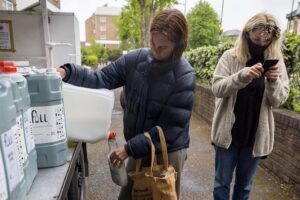
“The conservation of all resources by means of responsible production, consumption, reuse, and recovery of products, packaging, and materials without burning and with no discharges to land, water, or air that threaten the environment or human health.” Making a zero-waste philosophy a central part of your cruising life will benefit the marine ecosystem and ocean health, in addition to the convenience of optimizing your boat’s already-tight space.
And just like anything related to boating, getting the crew on board with the plan is essential to its success. Written plans posted in galleys or near the companionway are incredibly effective for starting and continuing new habits.
The fewer things we buy, especially non-decomposable things, the fewer things end up in landfills. With a little time spent finding new resources and talking with other cruisers, you’ll be surprised and delighted by how easy it is to reduce some “stuff” that always finds its way into your boat.
- You can buy shampoo, body wash, and household cleaning products in refill containers that use a fraction of the plastic or come in “swappable” containers. Solid bar shampoos and soaps are a great zero-waste alternative, and some have unique natural scents (for those who like that kind of thing) and unscented varieties.
- Do you need 12 sets of dishes and utensils on board, or would 4 or 6 sets suffice? If you invite a large group aboard for dinner, consider asking your friends to bring their dishware. The “bring your own…” is becoming a tradition embraced by landlubbers and sailors alike.

Dry foods in jars are pictured on the Topup Truck, an electric milk float converted into a zero waste shop which brings “packaging-free” to shoppers. (Photo by TOLGA AKMEN / AFP) (Photo by TOLGA AKMEN/AFP via Getty Images) - Invest in a good-quality, insulated water bottle and refill it as you go, avoiding plastic water bottles altogether. Buy a second one with a different style lid for your hot beverage of choice, and you’ll be set for drink containers for years. As you head inland for lunch or dinner at restaurants, you’ll find that almost every establishment is happy to refill your container.
- Replace paper napkins and paper towels with cloth. Most paper napkins and towels are not recyclable, meaning they get added to the garbage and end up in landfills. Alternatively, you can make or buy reusable cleaning cloths, including some that come on a roll – just like paper towels- except that you add them to your laundry instead of putting them in a landfill. As a bonus, you can pick the color and pattern.
- As cruisers, we can’t do much about pallet wraps, but we can decide We can avoid using handled plastic bags at the store by bringing our own reusable bags.
CHANGING YOUR HABITS
Adjusting some of our routines can make a big difference with minor changes.
- When leaving your boat, grab a few reusable bags for shopping or collecting seashells. Keep a set of different-sized bags in a variety of materials. Heftier canvas bags are useful for heavy items, and lightweight nylon or mesh bags are handy for lighter items. It’s easy to stuff a few bags within a bag, just in case (and there is almost always something on shore that you need a bag for).
- Keep a bag for taking to restaurants and include utensils to use instead of plastics offered by some restaurants. Also, toss in your own clean food containers for leftovers at the end of the meal, and refill your water container while you’re there. It’s surprising how these steps reduce waste from even setting foot through your companionway.
- Remove all packaging immediately after purchase, in the store, where you’ll likely have proper waste and recycling available. Label the contents with a permanent marker so you don’t have to make a “surprise casserole.”
- Compress garbage in a compact container as tightly as possible, using scissors to cut items as necessary. Compacted garbage takes up less landfill space and is less likely to be consumed by birds and animals.
- Follow the rules of disposal at sea. Here are some key highlights:
- Don’t chuck food (banana peels, onion skins, apple cores, etc.) within 3 miles of land. The decomposition of the food near land changes the marine life unique to shallower water, impacting natural sea life. Hold onto these foods, chop them into smaller pieces, and then discard them when you’re farther offshore.
- Never throw these items from your boat: Plastics, including plastic food wrappers, garbage bags, cigarette butts, and fishing lines. These things end up in the garbage patches caught in major ocean currents. They can be stowed onboard until you reach your next destination. Speaking of which…
- Plan your ports of entry thoughtfully: Carefully consider your next destination if you’ve been on passage for a few days or more. If you’re offloading garbage and recycling, ensure your destination is equipped with facilities; otherwise, plan on holding onto it until you reach a port with better facilities.

Between boat maintenance, provisioning, passage planning, and just the day-to-day life of cruising, we’ve already got a lot of things to keep us busy. Implementing a zero-waste plan might feel like a lot to take on but adopting one or two strategies can be more feasible. Chat with your cruising friends and family to learn what tips and tricks they’ve found helpful in reducing waste; cruisers are some of the most resourceful folks around and know better than probably any other recreational group how to lighten the load.
Try a few of these suggestions and discover what works best for you and your crew. Have you found other strategies for minimizing waste? Let us know in the comments!
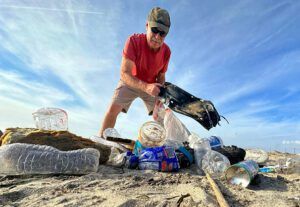

















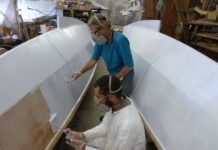
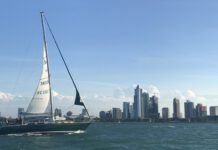













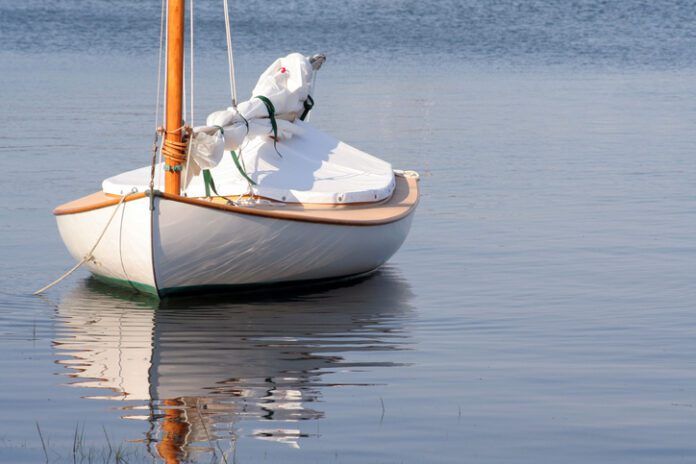
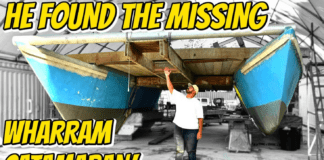




We’re not coastal cruisers, we’re inland sailors…but we make an effort to buy base ingredients in bulk, and pack them in refillable storage containers. At first, it was to minimize the amount of “stuff” on our little Tanzer, but it became obvious that it was also a garbage issue when we stopped at a restaurant near our own Village docks (Coxsackie, NY) and saw the public trash and recycling cans OVERFLOWING on Sunday morning. It was all chip bags, beer cans, 12 pack cartons, take out boxes from restaurants, and microwavable meal containers. It wasn’t our neighbors leaving this mess, it was our boating guests! We love our fellow sailors and cruisers, but it really is an issue.